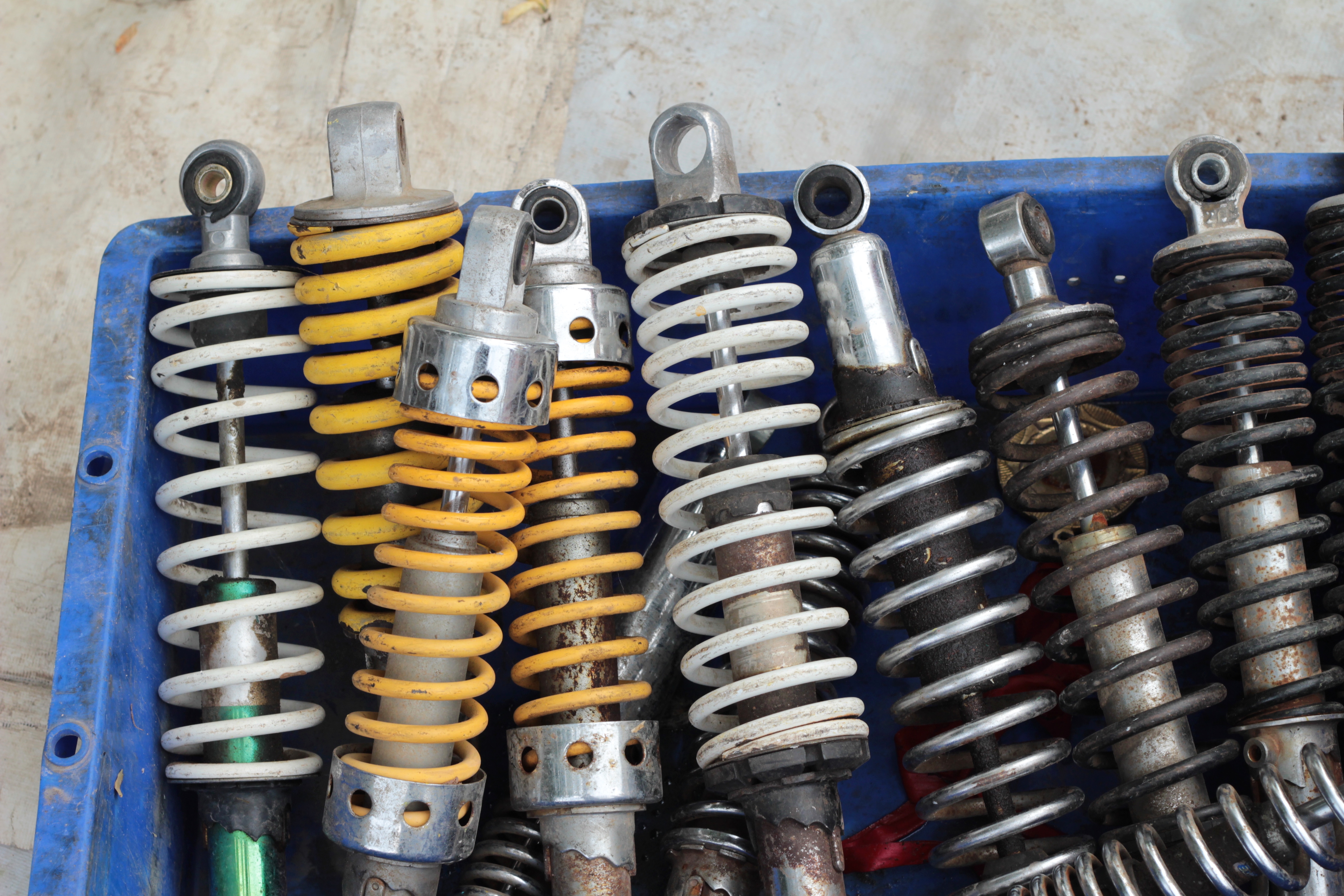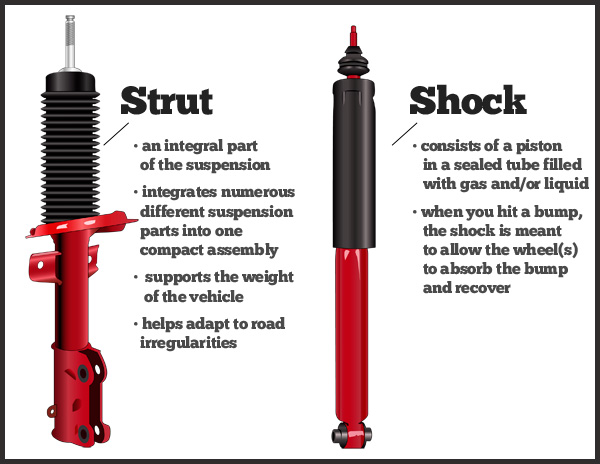Have you ever hit a bump in the road and felt your car shudder more than it should? That unsettling feeling might have you wondering if it’s time to replace your shocks and struts.
These crucial components of your car not only affect your comfort but also play a vital role in your vehicle’s safety and performance. Ignoring them could lead to more than just a bumpy ride. But is it really worth investing in new ones?
Before you make a decision, let’s delve into what shocks and struts do, how they impact your driving experience, and why replacing them could be a game-changer for your vehicle and peace of mind. Keep reading to find out if this is the upgrade your car desperately needs or if you can afford to wait a little longer.
Signs Of Worn Shocks And Struts
Shocks and struts play a crucial role in vehicle safety. They ensure smooth rides and proper handling. Knowing the signs of wear helps keep your vehicle in top shape. Let’s explore the warning signs of worn shocks and struts.
Bumpy Rides
A smooth ride is key for comfort. Notice more bumps than usual? This can indicate worn shocks or struts. Your car should glide over small road imperfections. If not, it’s time to check those parts.
Longer Stopping Distances
Stopping quickly is essential for safety. Worn shocks and struts can increase stopping distances. Your car may take longer to stop at a light or sign. This could lead to dangerous situations. Always ensure your shocks and struts are in good shape.
Uneven Tire Wear
Tires should wear evenly over time. Uneven tire wear suggests suspension problems. Worn shocks and struts can cause this issue. Check your tire tread regularly. It can reveal problems with your suspension system.
Leaking Fluid
Fluid leaks under the car are a bad sign. Shocks and struts may leak fluid if damaged. This is a clear sign of wear. Look for oily spots on your driveway. This might mean it’s time for a replacement.

Credit: www.reddit.com
Benefits Of Replacing Shocks And Struts
Enhancing vehicle safety and comfort, new shocks and struts ensure smoother rides by absorbing road impacts. They also improve tire performance and extend the lifespan of suspension parts, making driving more enjoyable.
Replacing shocks and struts might seem like an unnecessary expense, but the benefits speak for themselves. If you’ve ever felt like your car is riding like a boat on a choppy sea, it’s a sign that these components need attention. Taking the plunge to replace them can transform your driving experience and improve your vehicle’s overall performance.Improved Vehicle Handling
Upgrading your shocks and struts can drastically enhance your vehicle’s handling. Imagine taking a sharp turn with confidence because your car grips the road firmly. This upgrade ensures that your vehicle responds better to steering inputs, making driving more enjoyable and safer.Enhanced Safety
Worn-out shocks and struts can compromise your safety on the road. They play a crucial role in maintaining tire contact with the road, especially during emergency maneuvers. Ask yourself, is it worth risking your safety for a delay in maintenance?Extended Tire Life
Replacing shocks and struts can save you money on tires in the long run. Poor suspension leads to uneven tire wear, which means you’ll be buying new tires sooner than you expect. By ensuring your suspension is in top shape, you can maximize the lifespan of your tires.Increased Comfort
Remember that long road trip where every bump felt like a jolt? New shocks and struts can significantly improve ride comfort, smoothing out those annoying bumps and potholes. This upgrade is not just about luxury; it’s about ensuring a pleasant ride every time you hit the road. Ultimately, the decision to replace shocks and struts is about prioritizing your driving experience and safety. Have you noticed any signs of wear in your vehicle’s suspension? Investing in replacements might be one of the best decisions you make for your car and peace of mind.Costs Involved
Replacing shocks and struts can enhance your vehicle’s performance. Yet, it comes with costs. Understanding these costs helps you make an informed decision. Here’s a closer look at the expenses you might face.
Parts And Labor Costs
The biggest cost comes from parts and labor. Shocks and struts themselves can be pricey. Prices vary based on your car’s make and model. Quality also impacts price. Labor costs depend on the mechanic’s rates. Some shops charge more than others. It’s wise to get multiple quotes.
Potential Hidden Costs
There might be hidden costs. Sometimes, replacing shocks and struts reveals other issues. You might need to fix these to ensure safety. Additional parts or services can increase expenses. Always budget for unexpected repairs. This prevents surprises during your service.

Credit: www.cartalk.com
Diy Vs Professional Replacement
Replacing shocks and struts can improve your vehicle’s safety and comfort. DIY replacement saves money but needs tools and skills. Professional service ensures perfect installation and peace of mind.
When it comes to maintaining your car’s suspension system, deciding between DIY and professional replacement of shocks and struts can be challenging. This choice isn’t just about cost—it’s also about your comfort level with tools, your time investment, and the assurance of a job well done. Whether you’re a seasoned car enthusiast or a curious beginner, understanding both paths will help you make an informed decision that suits your needs and skills.Tools And Skills Needed
Before diving into a DIY project, it’s essential to know what tools and skills you’ll need. Basic tools like a socket set, wrenches, and a jack stand are a must. But, you also need the technical skill to safely remove and replace these critical components. Are you comfortable navigating the complexities of your car’s undercarriage? If not, a professional might be your best bet.Pros And Cons Of Diy
Pros: – Cost Savings: Doing it yourself can save you a significant amount of money on labor costs. – Learning Experience: It’s a great opportunity to learn more about your vehicle and gain valuable mechanical skills. Cons: – Time-Consuming: It can take several hours, especially if you’re new to this type of work. – Risk of Mistakes: Incorrect installation can lead to poor vehicle handling and even safety issues. Do you have the patience and time to tackle this project with precision?Benefits Of Professional Service
Opting for professional service has its clear advantages. Skilled mechanics have the experience to do the job right the first time. They ensure that your vehicle’s suspension system functions optimally. Moreover, professional services often come with warranties or guarantees. This means peace of mind knowing that if something goes wrong, you’re covered. Are you willing to pay a bit more for the assurance of quality and safety? Choosing between DIY and professional replacement for shocks and struts boils down to weighing your skills, time, and comfort level. Whether you pick up a wrench or call a mechanic, ensure your choice aligns with your priorities for safety and performance.When To Replace Shocks And Struts
Replacing shocks and struts is worth considering when your car shows signs like excessive bouncing or uneven tire wear. These components are crucial for a smooth ride and vehicle stability. Timely replacement ensures safety and comfort during every drive.
Knowing when to replace shocks and struts can be a game-changer for your vehicle’s performance and safety. These components are crucial for a smooth ride, maintaining tire contact with the road, and ensuring your car handles properly. Ignoring worn shocks and struts can lead to more serious issues down the road, impacting not just your car’s health but also your wallet.Mileage Recommendations
A general rule of thumb suggests examining your shocks and struts every 50,000 miles. However, this isn’t a one-size-fits-all situation. Depending on your driving habits and road conditions, you might need to replace them sooner. Consider how often you drive on rough roads or carry heavy loads. These factors can accelerate wear and tear. Have you noticed a dip in your car’s handling or an increase in stopping distance? These could be signs that your shocks and struts are due for a check-up.Inspection Tips
Regular inspection is key to catching issues early. Look for any signs of oil leaks, as this can indicate worn seals. Check for unusual noises or excessive bouncing during your drives. You might even try the bounce test: press down hard on your car’s front or rear bumper. If it bounces more than twice, it’s time to consider a replacement. What do you see when you look at your tires? Uneven wear patterns can also hint at problems with your shocks and struts. Trust your instincts, and don’t hesitate to consult a professional if something seems off. Being proactive about your shocks and struts can prevent more costly repairs in the future. It’s all about ensuring a safe and comfortable driving experience. After all, a smooth ride isn’t just a luxury—it’s a necessity.Impact On Vehicle Value
Replacing shocks and struts isn’t just about improving your ride comfort; it can also significantly impact your vehicle’s value. Whether you’re planning to sell soon or keep your car for a while longer, considering how these components affect resale value can be crucial. Are you curious about how potential buyers perceive the condition of these parts in your car?
Resale Considerations
When it comes to selling your car, every detail matters. Shocks and struts might not be the first thing buyers check, but their condition can influence a sale. Buyers often appreciate knowing that a car has been well-maintained. Replacing old or worn shocks and struts can signal that your vehicle is taken care of.
Imagine showing your car to potential buyers. They test drive it and notice a smooth ride without unexpected bumps or noises. This can make them more confident in their decision to purchase. A well-maintained suspension system can be a hidden gem that boosts your vehicle’s resale value.
Buyer Perceptions
Think about the mindset of a car buyer. Many buyers associate a smooth ride with a reliable vehicle. If your car’s shocks and struts are in poor condition, it might lead to doubts about other maintenance aspects. Will they start wondering about other unseen issues?
Replacing these components can shift perceptions. A car that handles well and feels stable can make a significant impression. You might even find that buyers are willing to pay a bit more for a car that feels newer and more reliable.
Have you ever purchased a used car and immediately felt the difference in ride quality? That sensation can be a deciding factor. By investing in replacing shocks and struts, you can enhance how potential buyers view your car’s value.
So, is it worth it? If you aim to maximize your car’s resale potential, focusing on these details can pay off. You have the power to shape how buyers perceive your car’s worth. Wouldn’t you want to give them the best impression possible?

Credit: www.tlmotors.com
Conclusion
Replacing shocks and struts can enhance your car’s performance. It ensures a smoother ride. Also, it improves safety on the road. Worn-out parts affect handling and comfort. Investing in new shocks and struts is wise. It protects your vehicle’s longevity.
Plus, it offers peace of mind during drives. Always consider the cost versus benefits. Quality replacements might be pricier. But they save money in the long run. Regular maintenance keeps your car reliable. Trustworthy mechanics can guide decisions. Keep your ride smooth and safe.
Make informed choices for your vehicle’s health.
